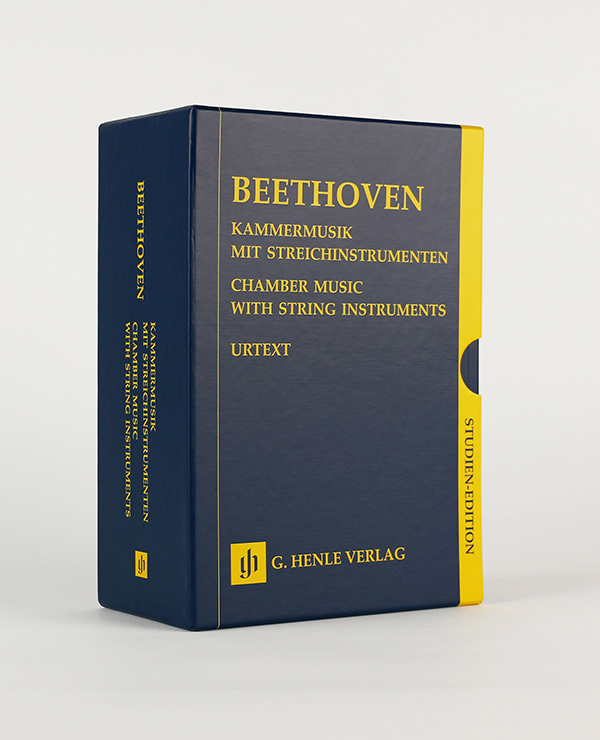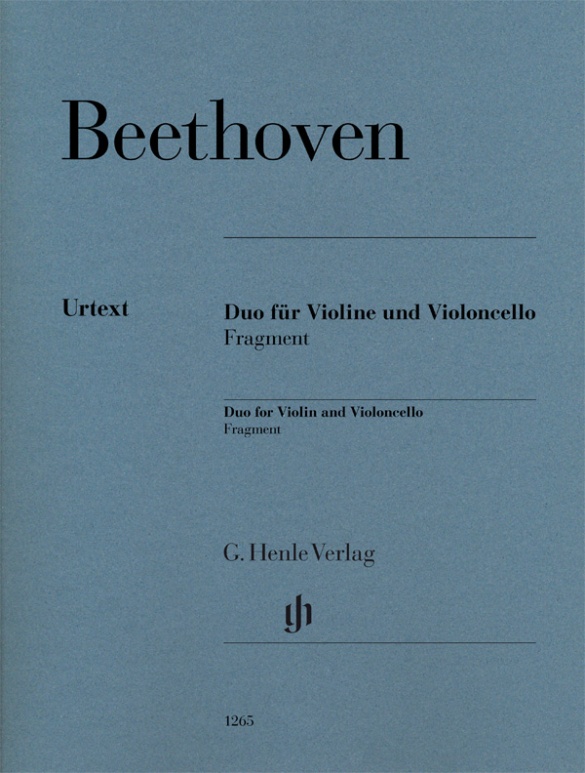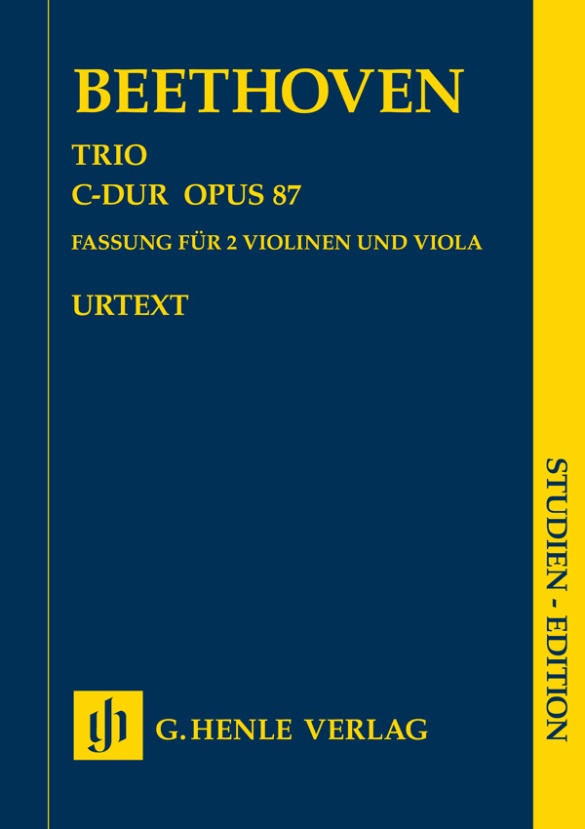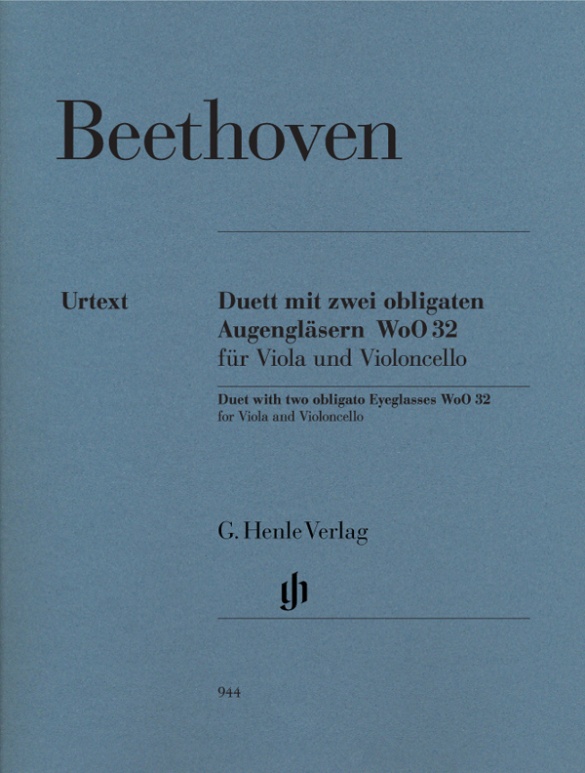

Ludwig van Beethoven
Duet with two Obligato Eyeglasses WoO 32 for Viola and Violoncello
Beethoven probably originally planned a complete string duo with four movements. Aside from the introductory movement, a minuet has also survived that is likewise published here. Our single edition, taken from the established volume “String Trios and String Duos” (HN 192), will certainly secure many new friends for this original work.
mws-henle.cms.title-works.headline
mws-henle.cms-product-detail.composer-headline
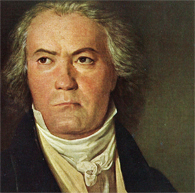
Ludwig van Beethoven
No composer has had as profound and sustained an influence on immediately following generations to the present day as Beethoven. His instrumental music, especially his symphonies, served as touchstones for symphonic composition throughout the nineteenth century. The extraordinarily high standard of his music and his relative independence as a freelance composer have led to his being characterized as the greatest composer of all time.
| 1770 | Baptized in Bonn on December 17, thus probably born on December 16, the son of Johann van Beethoven, a tenor in the court chapel of the prince-elector. First musical instruction from his father. |
| 1778 | First public performance. |
| around 1780 | Musical training with the deputy court organist Christian Gottlob Neefe, who in 1783 presented him in Cramer’s “Magazin der Musik” as a second Mozart. |
| 1782 | Acquaintance with the Breuning family, where his literary interest is aroused. First publication: Piano Variations in C minor on a March by Dressler, WoO 63. |
| 1783 | Harpsichordist in the court chapel; 1784 assistant to the court organist. |
| 1787 | Journey to Vienna. Here he very likely meets Mozart, who probably gives him some lessons. After a short while he must return home to his mother, who is ill with tuberculosis. |
| 1792 | He travels a second time to Vienna, where he will remain until the end of his life. Count von Waldstein sends him on his way with the famous words: “With steady diligence you will receive Mozart’s spirit from Haydn's hands.” In Vienna he studies with Haydn, Albrechtsberger, Schuppanzigh, and Salieri. As a pupil of Joseph Haydn, he achieves extraordinary recognition among the Viennese nobility and receives financial support. Great demand for his compositions from publishing houses: chamber music and piano sonatas from the Bonn and early Viennese years are issued. His first works printed in Vienna (among them the piano sonatas, Op. 2) already bear the hallmark of his compositional style: a forward-advancing, spirited, process-related character. |
| 1796 | Concert tours to Prague, Berlin, Leipzig, and Dresden, which cement his fame. |
| 1798 | Piano Sonata in C Minor, “Pathétique,” Op. 13. |
| 1798–1800 | String quartets, Op. 18. |
| 1799/1800 | Symphony No. 1 in C major, Op. 21 |
| 1795/1800 | Piano Concerto No. 1 in C major, Op. 15 |
| 1800–01 | Piano sonatas, Op. 27, “quasi una fantasia,” including the Moonlight Sonata, Op. 27 No. 2. |
| 1801 | Composition of the Symphony No. 2 in D major, Op. 36 (until 1802). Publication of the Piano Concerto No. 2 in B-flat major, Op. 19. |
| 1801/02 | Crisis brought on by incipient hearing loss, documented in the “Heiligenstadt Testament.” Thereafter he begins, by his own admission, a “New Path” in his compositions, reflected particularly in the piano sonatas, Op. 31 (including the Tempest Sonata); the piano variations, Op. 34 and 35; and the Symphony No. 3 in E-flat major, “Eroica,” Op. 55: they are characterized by enhanced structural development as well as by the use of Baroque techniques and models from other genres. |
| 1803–10/12 | Frenzy of creativity; these years are dubbed Beethoven’s “heroic period”. Written during this phase are Symphonies Nos. 3 through 8 (Opp. 55, 60, 67, 68, 92, 93); Piano Concerti Nos. 3 through 5 (Opp. 37, 58, 73); the Violin Concerto in D major, Op. 61; the Triple Concerto, Op. 56; string quartets (the Razumovsky quartets, Op. 59; the Harp Quartet in E-flat major, Op. 74; the String Quartet in F minor, “serioso,” Op. 95); piano trios (among them the “Ghost” Trio, Op. 70); piano sonatas (including the Waldstein Sonata in C major, Op. 53; the Appassionata in F minor, Op. 57; and “Les Adieux” in E-flat major, Op. 81a); songs (including “An die Hoffnung,” Op. 32); the Mass in C major (Op. 86); and the opera “Fidelio” (Op. 72, first version 1804/5). |
| 1808/09 | Beethoven rejects an offer to become the First Kapellmeister at the court in Kassel because his patrons, Archduke Rudolph, Prince Kinsky, and Prince Lobkowitz, provide him with a comparable yearly salary. |
| 1811/12 | Travels to the spa at Teplitz, where he meets Goethe. In 1812, the letter to the “immortal beloved,” whose identity (Antonie Brentano or Josephine Deym) is still uncertain. |
| 1814 | Piano Sonata in E minor, Op. 90; third version of the opera “Fidelio.” Extraordinarily successful concert with Symphonies Nos. 7 and 8. Still, financial crisis brought about by currency devaluation and the absence of yearly stipends from Kinsky and Lobkowitz. |
| 1815 | Death of his brother Caspar Carl and the beginning of the years-long battle for the guardianship of his nephew Karl. |
| 1816 | Song cycle “An die ferne Geliebte,” Op. 98; Piano Sonata in A major, Op. 101. |
| 1817–18 | Hammerklavier Sonata in B-flat major, Op. 106. |
| 1818 | Beethoven begins keeping conversation books due to increasing hearing loss. |
| 1819–23 | Missa solemnis, Op. 123. |
| 1819/23 | Diabelli Variations, Op. 120. |
| 1820 | Piano Sonata in E major, Op. 109, marks the beginning of his glorious late period, which is characterized by exceeding the boundaries of forms, by extreme pitch registers, advanced harmonies, and an increased penchant for contrapuntal forms such as fugue; standing in opposition to the propensity for esotericism in his chamber music is the monumentality of Symphony No. 9. |
| 1821/22 | Piano Sonatas in A-flat major, Op. 110 (with fugue in the final movement), and C minor, Op. 111 (reduction to two movements). |
| 1822–26 | String quartets, Opp. 127, 130, 131, 132, 135, as well as the Grosse Fuge, Op. 133, which originally formed the final movement of Op. 130. |
| 1823/24 | Completion of the Symphony No. 9 in D minor, Op. 125, which for the first time in the history of the genre includes voice parts (Schiller’s “Ode to Joy”). It will become the most famous and most frequently played symphony of all time. |
| 1827 | Death in Vienna on March 26. |
mws-henle.cms-product-detail.author-headline
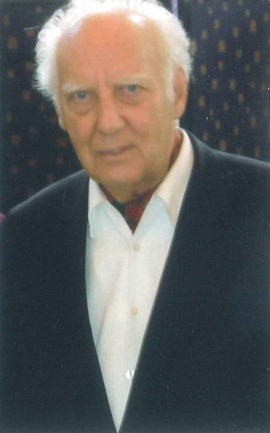
Emil Platen (mws-henle.person.role.HERAUSGEBE)
Prof. Dr. Emil Platen, born in 1925 in Düsseldorf, did his school-leaving certificate in April 1946 after have done fatigue duty and military service in the Navy. He began studying musicology at the University of Cologne for two semesters, before changing to viola, composition (with Wilhelm Maler) and choral direction (with Kurt Thomas) at the Music Academy in Detmold. Following his exam as a choral director (1950) he continued his studies of musicology and in 1957 received his doctorate from the University of Bonn with a thesis entitled “Chorische Choralbearbeitungen von Johann Sebastian Bach”.
He spent several years working as a research associate at the Beethoven-Archiv in Bonn. As a “lecturer for practical music”, he was then put in charge of Bonn University’s musical activities, and became the university’s musical director in 1963. He was appointed an Honorary Professor for Musicology in 1971. Alongside his work with different student ensembles, he also did musicological work, both as a teacher and a scholar. Platen’s interests were the music of Bach and Beethoven as well as questions of structure in music. Since becoming an emeritus professor in 1990, he has devoted himself more intensively to editorial projects, in particular Beethoven’s late quartets. In all of this, his particular interest is the direct relationship between his academic work and musical practice.
Product Safety Informations (GPSR)

G. Henle Verlag
Here you can find the information about the manufacturer of the product.G. Henle Verlag e.K.
Forstenrieder Allee 122
81476 München
Germany
info@henle.de
www.henle.com
Und nun schaut man in die Henle Ausgabe und bemerkt: Diese Fortes und diese Bindebögen stammen ja gar nicht von Beethoven, was man freilich auch ohne Henle-Ausgabe hätte herausfinden können, wenn man in der Bibliothek nachgeschaut hätte. … Man fühlt sich bei der Henle-Ausgabe freier. … deshalb kann nur begrüßt werden, dass endlich eine Urtextausgabe verfügbar ist.
Das Orchester, 2010“Caro Barone Guida-Carro-Letame (Dreckfahrer), vi sono molto obbligato per la cecità dei vostri occhi”, scriveva Beethoven al suo amico violoncellista N. von Zmeskall-Domanovetz all’inizio del proprio soggiorno a Vienna. Questo “motto” di spirito è stato interpretato come il segno che il pezzo a noi arrivato come Duett mit zwei obligaten Augengläsern WoO 32 (Duetto con due Occhiali obbligati) per viola e violoncello sia stato composto per l’amico e per se stesso. … La presente edizione Urtext della Henle Verlag pertanto riporta il primo tempo ed il Minuetto, unica indicazione agogica e di altro genere di pugno di Beethoven: probabilmente il compositore si riservava di aggiungere colori ed altri dettagli nel momento di dare alle stampe questa musica, fatto che altresì non avvenne; infatti fu pubblicata la prima volta solo nel 1912.
Archi, 2010First published only in 1912, Emil Platen has based his edition from autographs held in the British Library to produce the wonderfully clear printing that we have come to expect from Henle. Violists and their cellist friends will lap this up.
Stringendo, 2010推荐
autogenerated_cross_selling
本书目其他版本


